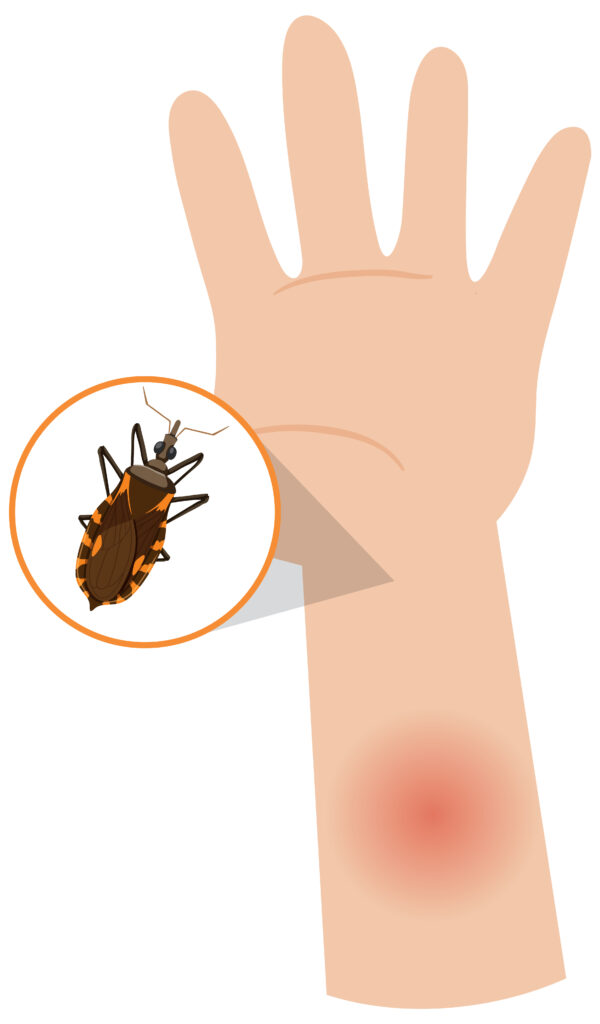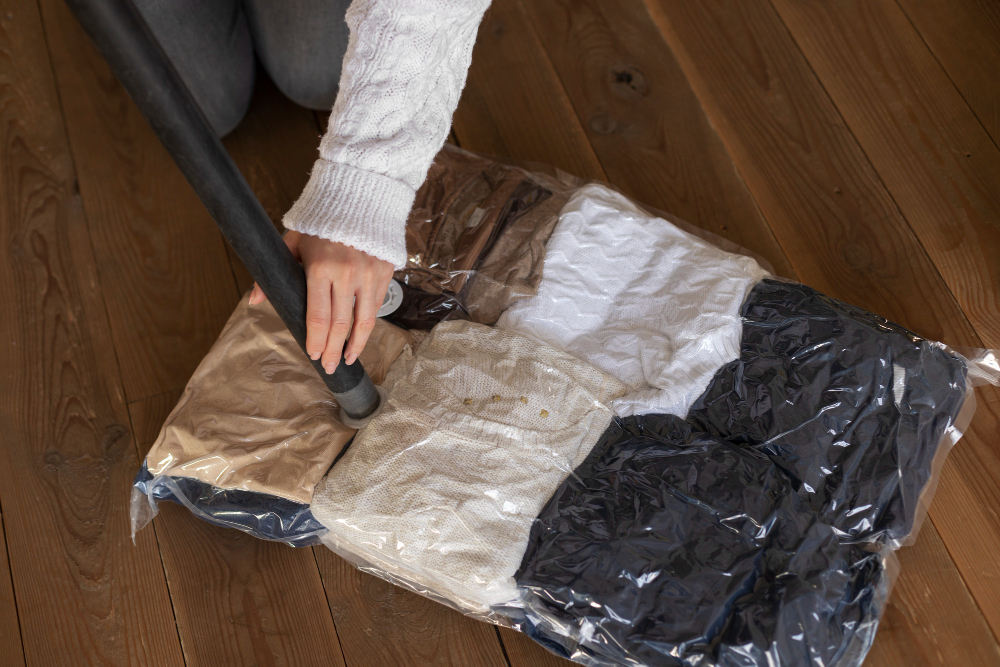Have you had enough of those relentless bed bugs infesting your home in Oman? You’re not alone. Bed bug infestations can be a frustrating and bothersome problem, but the good news is that there are effective ways to get rid of bed bugs in your home. In this guide, we will provide you with straightforward solutions and practical tips to eliminate bed bugs once and for all.
There are several key methods to get rid of bed bugs and prevent their infestation in your home accommodation including thorough cleaning and decluttering of the affected areas, vacuuming regularly, especially in areas where bed bugs are commonly found, such as mattresses, box springs, and furniture, and many more. Doing so helps remove both adult bugs and their eggs before they could breed and infest your space. If you’re interested to learn more practical tips and methods for doing so, keep on reading below.

What are Bed Bugs?
Bed bugs, scientifically known as Cimex lectularius, are minuscule insects measuring around 5 mm in length.
These blood-feeding pests have a flat, oval-shaped body and typically appear reddish-brown in color.
Due to their small size, they can be challenging to spot unless present in large numbers. Bed bugs have a preference for hiding in concealed spaces and furniture, although they are most commonly found in proximity to beds.
They rely on blood meals to grow and reproduce, with females laying up to 250 eggs in their lifetime.
As a result, even a minor bed bug issue can quickly escalate into a full-blown infestation.
While these parasites do not transmit diseases, they do pose a health concern and require prompt action to be effectively dealt with.
Why Do I Have Bed Bugs at Home?
Bed bug infestations can be a common occurrence in Oman, despite the misconception that they are only attracted to dirty environments.
In reality, these pests are drawn to blood, warmth, and carbon dioxide, making most bedrooms a suitable environment for them.
This means that even the cleanest and most well-maintained homes can fall victim to bed bug infestations.
Once they find a suitable food source, such as a human host, bed bugs will hide near the area and patiently wait for their next meal opportunity.
The introduction of bed bugs into your home can happen through various means.
It could be through second-hand items like furniture, where these bugs can hitch a ride.
Alternatively, you may have unknowingly picked them up from infested places you’ve stayed at, such as hotel rooms.
It’s also possible for guests visiting your home to inadvertently bring bed bugs with them.
However, it’s important to note that pets are unlikely to bring bed bugs into your home, as these pests do not typically live on animals.
How Can I Tell if I Have Bed Bugs at Home?
If you suspect the presence of bed bugs in your home in Oman, it’s important to take immediate action.
Detecting the problem early on can save you from the headache of dealing with a full-blown infestation, which can be complex and costly to resolve.
Here’s how to help you identify and address a potential bed bug issue:
Don’t rely solely on bites: The first sign most people associate with bed bugs is bites.
However, it’s crucial not to jump to conclusions based on bites alone.

Bed bug bites can resemble other insect bites, and some individuals may not react to them at all.
Therefore, it’s essential to look for additional evidence.
Search for physical evidence: Look for the following signs that indicate the presence of bed bugs:
- Dark red stains on your sheets: These stains could be crushed bed bugs or even your own blood, left behind after feeding.
- Yellow shed skins and eggshells: Bed bugs shed their exoskeletons as they grow, leaving behind tiny yellow skins and eggshells that are approximately 1 mm in length.
- Fecal spots: Bed bug droppings appear as tiny black spots, similar to ink stains. They are most visible on white bed sheets or light-colored surfaces.
- Musty odor: A distinct musty smell may be present in areas infested with bed bugs. If you notice an unusual odor, it could be an indication of their presence.
Spotting the bed bugs: Although small, bed bugs are not invisible to the naked eye.

With careful inspection, you may be able to spot the bugs themselves, usually hiding in crevices, seams of mattresses, or along bed frames.
Take immediate action: If you have identified signs of bed bugs, it’s crucial to act promptly to prevent the infestation from worsening.
Begin by isolating infested items, such as bedding and clothing, in sealed plastic bags to contain the bugs.

Launder these items using hot water and high-heat drying to kill any bed bugs and their eggs.
Thoroughly vacuum the affected areas, paying close attention to cracks, crevices, and furniture.
Empty the vacuum contents into a sealed bag and dispose of it immediately.
Consult a professional: While DIY methods can be effective for minor infestations, seeking professional assistance is recommended for severe or persistent bed bug problems.

Pest control experts have the knowledge, experience, and specialized treatments to eradicate bed bugs effectively.
Remember, early detection and swift action are key to tackling bed bug infestations in Oman.
By being vigilant, taking preventive measures, and seeking professional help when needed, you can successfully eliminate these pests and ensure a bug-free living environment.
Step-by-Step Guide to Getting Rid of Bed Bugs in Your Home
1. Determine the extent of the infestation
Check various areas in your home, including:
- Mattress seams
- Chairs, couches (including under cushions)
- Loose wallpaper
- Joints of furniture and drawers
- Wall and ceiling junctions
- Around electrical outlets
- Wall crevices
2. Prevent further spread
Dispose of immediate garbage by sealing it in a plastic bag before discarding it. If you need to move items out of the infested room, seal them first to prevent spreading bed bugs.
3. Vacuum the affected areas
Use a high-quality vacuum cleaner to thoroughly vacuum both sides of your mattress, closet, dresser, and any other infested areas. Don’t forget to vacuum the carpet as well. While vacuuming won’t eliminate all bed bugs, it helps reduce their numbers.
4. Seal and dispose of vacuum contents
Empty the vacuum canister into a sealed plastic bag and discard it in an outdoor trash can. Properly sealing and disposing of the contents will prevent bed bugs from escaping.
5. Launder infested items
Wash all infested linens, including bed sheets, clothes, soft toys, and upholstery, on the hottest cycle allowed in your washer and dryer. If an item cannot be machine washed, consider using steam treatment, which is equally effective.
Non-chemical methods to kill bed bugs:
- Heat: Use high temperatures to kill bed bugs by running infested items through the washer and dryer on a high heat setting. For larger items, consider using a portable heat chamber or professional heat treatment.
- Cold: Utilize your freezer by sealing infested items in a bag and placing them in the freezer at 0°F for at least four days.
- Steam: Use a steam cleaner with a minimum temperature of 130°F to treat mattresses, couches, carpets, and other surfaces. Be cautious around electrical elements.
- Mattress cover: Protect your mattress and box spring with a bed bug-proof encasement, preventing external infestations and causing trapped bed bugs to eventually die.
- Bed bug traps: Place traps under furniture legs or use dedicated bed bug traps to catch stray bugs.
Chemical methods to kill bed bugs:
- Pesticides: Follow instructions carefully when using pesticides. Pyrethrins, pyrethroids, and desiccants are commonly used compounds. Products like Harris Bed Bug Killer or EcoRaider Bed Bug Killer can be effective options.
- Bug bombs or foggers: Use caution with these highly toxic products, as they require vacating your home during treatment. However, they may not reach all cracks and crevices, providing limited effectiveness.
- Professional assistance: If you’re not comfortable with DIY methods or the infestation persists, consider hiring a professional exterminator who can handle chemical treatments safely and effectively.
Summary
If you’ve reached your breaking point with bed bugs invading your home in Oman, take heart—there are effective solutions available to combat these persistent pests.
By implementing methods such as thorough cleaning, decluttering, regular vacuuming, and targeted treatments, you can remove both adult bugs and their eggs, preventing further infestation.
Don’t let bed bugs disrupt your peace of mind any longer—follow the tips outlined in this guide and take back control of your home.
READ NEXT: 5 Reasons Expats Work and Live in Oman